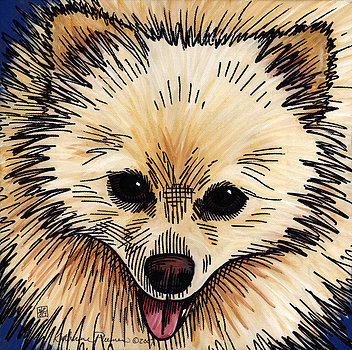
When George I ascended the English throne in the 18th century, his queen consort was German. Their descendants went on to marry German aristocrats who often invited German visitors to English court. These dignitaries brought with them their Spitz, dogs that quickly caught on in fashion. Since they were thought to originate from a region of Pomerania (now present day Germany and Poland), they were called “Pomeranians.” Spitz-type dogs had long been among the most popular dogs in Pomerania, and when Johann Friedrich Gmelin was classifying dogs in his “Systema Naturae” of 1788, he named the entire Spitz family, ‘Canis pomeranus.’
Weighing in between 30 and 50 pounds, these dogs didn’t resemble the Pomeranians we know presently, and it was George I’s great great-great-granddaughter, Queen Victoria, who shrank the size of the dogs. By the end of her life, the average size of the Pomeranian had decreased by at least 50%.
Today, the name “German Spitz” refers to both a breed of dog and a type of dog (“Spitz,” the German for “pointed”). Some sources make the point that the German Spitz isn’t a big Pomeranian, the Pomeranian is a toy German Spitz. and while both breeds originated in Germany, the modern Pomeranian was developed in the United Kingdom.
Image: “Sunny” in Acrylic and Ink by Katherine Plumer is available here.
